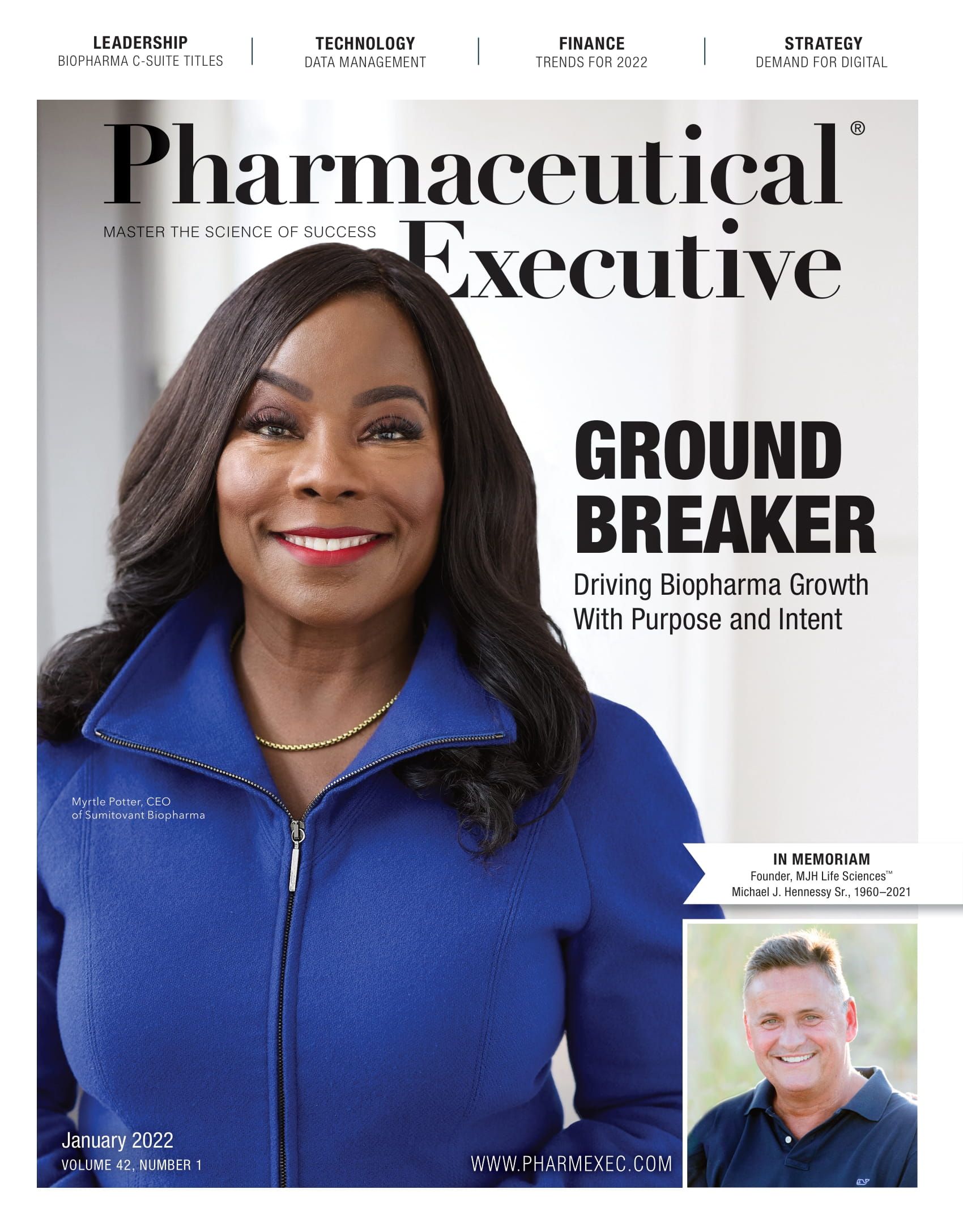Supply Chain Procurement
As borders shut down during the pandemic, pharma learned some lessons about sourcing.
The supply chains of many industries were disrupted or derailed during COVID-19, but the challenges confronting the healthcare and pharma supply chains were, inevitably, among the most keenly felt as offices, facilities, factories, and borders closed down the world over. An over-reliance on China as a producer and manufacturer of raw materials was quickly exposed, especially with China being the first country to lock down in response to the virus. China’s long-held policy of stockpiling commodities created a significant challenge for industries in the US around rare manufacturing supplies, “but particularly for pharma because of the impact on vaccines,” notes Bob Jansen, founder and CEO of pharma vendor/supplier optimization company Zensights and a member of Pharm Exec’s Editorial Advisory Board (EAB). Zensights’ Kris Ungvarsky also notes that a large amount of the world’s personal protective equipment (PPE) was made in the Hubei Province in Central China where the COVID outbreak started.

The seismic effect of the initial crisis in China has led to companies rethinking their relationships with single-source suppliers and “start to question whether global supply chains and just-in-time manufacturing really works,” says Peter Young, Pharm Exec EAB member and CEO of investment bank Young & Partners. “Look at all the companies who can’t make things because they can’t get one item or one component,” he adds. “A lot of companies are now revising their manufacturing strategies and thinking about onshoring a lot of components, even if it costs them more. Currently, they’re losing revenue because they can’t finish making the products.” Andrew Kirk, chief operating officer of specialty medicine distribution company BioCareSD, says, “It’s amazing how much we took for granted before the pandemic. For decades there’s been this focus on just-in-time delivery, and on customers, distributors, and wholesalers wanting to keep their inventories as low as possible. So, the pandemic really shook up the snow globe in that regard.”
BioCare saw its manufacturers unable to source trucks to ship out products; it was also affected by the huge volume increase experienced by package delivery firms such as UPS and FedEx, one result of people not going out to shop any more. BioCare’s cold chain deliveries began to take several days, where they had previously taken just one day. Also impacted were plasma-derived products to treat immunocompromised patients, notes Kirk. There was, inevitably, a decline in plasma donations during the pandemic, and this was exacerbated by the closing of borders, particularly the restrictions imposed on “non-essential” crossings on the US-Mexico border, where many plasma-donation centers are located. “That’s an aftereffect that we’re going to have to continue to deal with,” Kirk adds, “as it usually takes about nine months from the time a donor donates plasma to it being a finished product.”
While some things were outside of the company’s control, BioCare responded to the pandemic by “being much more proactive in every area of the business,” says Kirk. “We started to think to plan for shortages of certain products required for shipping. We secured our warehouse, not allowing visitors in. We worked from home much more where we could, and we looked at backup staff to manage the warehouse in case of absences.” Kirk is confident that the mentality around sourcing is now changing. “I think companies and people are much more prepared,” he tells Pharm Exec. “From our perspective, manufacturers and customers are now looking much more at disaster-preparedness; they’re looking at having safety stock. Where they contract with a single source, they are looking to have backups. I hope that it means everybody is starting to think a little bit more in the long term.”
Ungvarsky adds that being single-sourced was bad business anyway. “You have to make sure you have that source, but you also need a backup supplier ready to go. You’ve got to keep the other option out there,” he says. And, of course, he points out, it’s not only a pandemic that reveals the weakness of single-sourced supply. “It could be a hurricane, a typhoon, or any number of other disasters.”
Commercial concerns
We tend to differentiate between supply chain sourcing for manufacturing and product/service sourcing for the commercial side of the industry, but the two, of course, overlap; and when the pandemic hit the former, there were consequences for the latter. Take PPE, for example. “Companies needed to support their sales forces—those who were still allowed to go into doctors’ offices—with PPE,” says Ungvarsky. “It was essential to get those safety supplies to people, especially when we didn’t know too much about the virus. This had a major impact, because so many other things within the business had to stop in order to get those materials in.” Then, Ungvarsky goes on, there was testing. “How do you do source testing? How do you follow local, regional, and national regulations around that?” The sourcing of clinical research organizations, nursing, and testing sites for patients was affected because no one could meet patients in person, bringing clinical trials to a halt. Companies couldn’t use services that weren’t pandemic-ready.

These types of problems were particularly acute for small, emerging biopharma companies. “What has been brought to the fore is the need for professional procurement in these organizations,” says Ungvarsky. “Small pharma companies don’t have procurement departments because they’re really focused on cash flow.” (Jansen says that probably 80%–85% of pharmaceutical companies don’t have a procurement department.) Ungvarsky continues, “To build out a procurement department, you need three to five initial full-time employees. That’s a pretty big investment. And it’s about who’s going to pick up the phone, right?” He recalls his earlier role as head of North America procurement at GSK where “we made the phone calls and people answered them because we had that volume, we had those relationships. But when you’re a smaller company, say $500 million in revenue, you don’t know where to turn and you don’t see the market dynamics. The pandemic posed tremendous risk for smaller companies and shut down businesses where they didn’t have that expertise.” A vendor/supplier optimization company such as Zensights can bring “a consortium or network effect,” Ungvarsky goes on. “With our number of clients, we are not as big as a large pharma company when we go to the table, but we certainly have a larger voice than if our clients were operating in silos.” Outsourcing commercial procurement and sourcing also allows companies access to stronger data and analytics capabilities. “When we’re supporting our clients, instead of doing one competitive process per year, we’re doing 10 or 15 in a similar market segment,” says Ungvarsky. “So, we have a better finger on the pulse of where the markets are going.”
Indeed, for Ungvarsky, data will prove to be “a major differentiator” for commercial procurement and sourcing moving into this year and beyond. “I think we’re going to get into more of a steady state in 2022,” he says. “People are realizing that what we’ve just been through is basically an acceleration of five years into the digital future. We know that we need to be good at ingesting data and having the data drive insights and decisions, and then speeding up that loop, like the Googles and the Amazons do.” In the consumer packaged goods space, anything that Google and Amazon do, “they do competitively and quickly,” he notes. While the pharma world is more risk-averse, he believes there’s an opportunity for pharma “to dial down that risk aversion and use data to drive those insights and that action quicker.”
Julian Upton is Pharm Exec’s European and Online Editor. He can be reached at jupton@mjhlifesciences.com.

Cell and Gene Therapy Check-in 2024
January 18th 2024Fran Gregory, VP of Emerging Therapies, Cardinal Health discusses her career, how both CAR-T therapies and personalization have been gaining momentum and what kind of progress we expect to see from them, some of the biggest hurdles facing their section of the industry, the importance of patient advocacy and so much more.
Applying Porter’s Five Forces to Portfolio Management in Pharmaceutical R&D: A Strategic Roadmap
March 17th 2025The increasing costs and complexity of R&D in the pharmaceutical industry have necessitated the adoption of strategic portfolio management to optimize resource allocation and enhance competitive advantage.